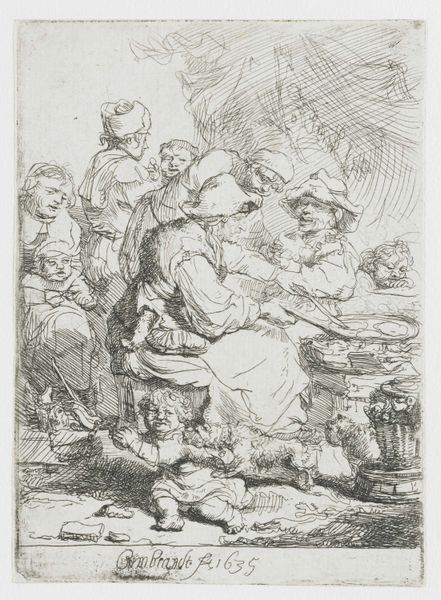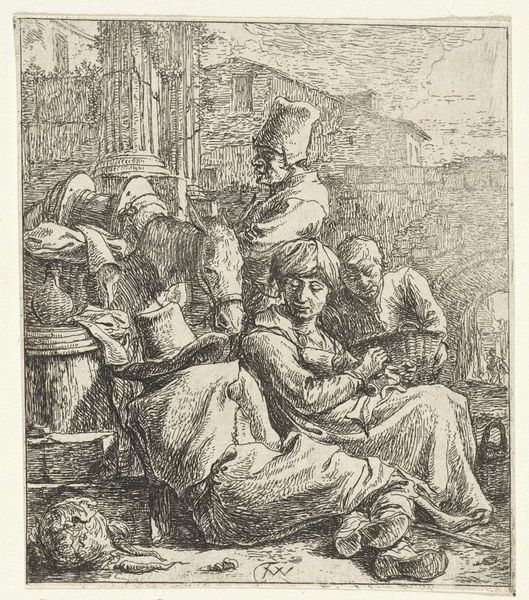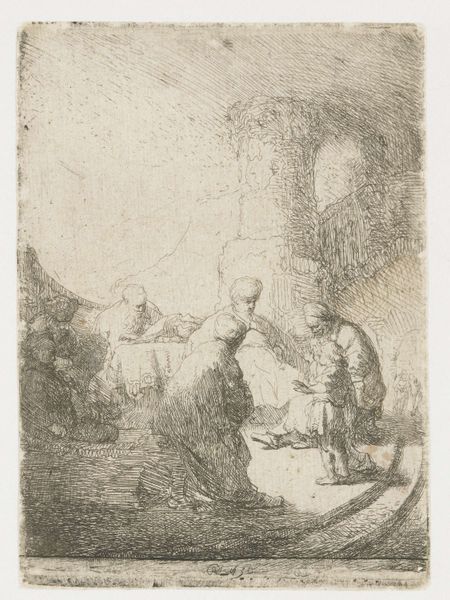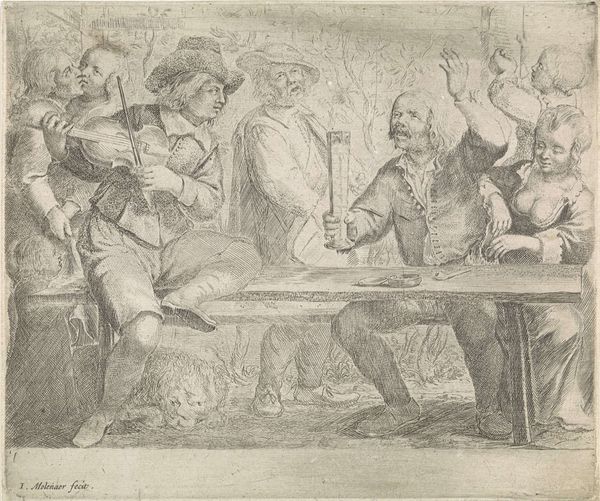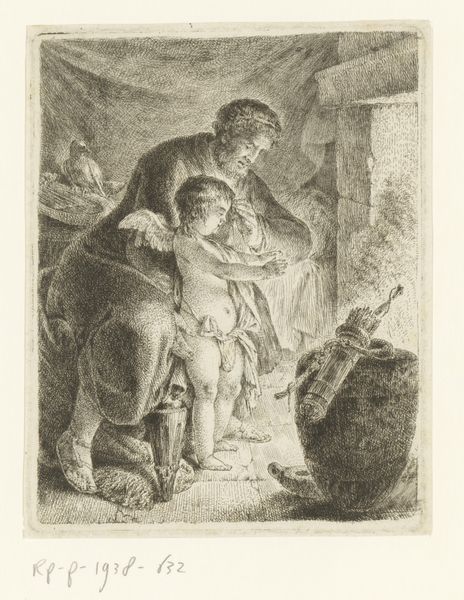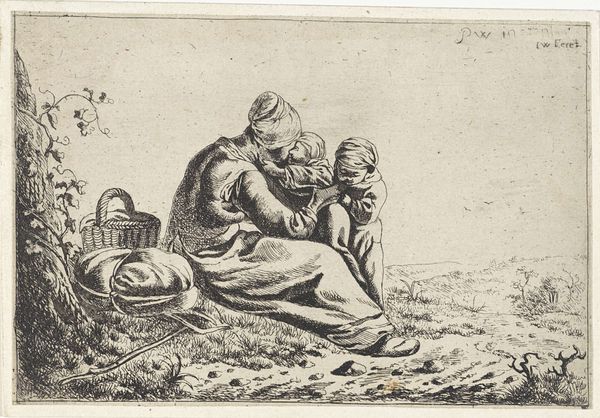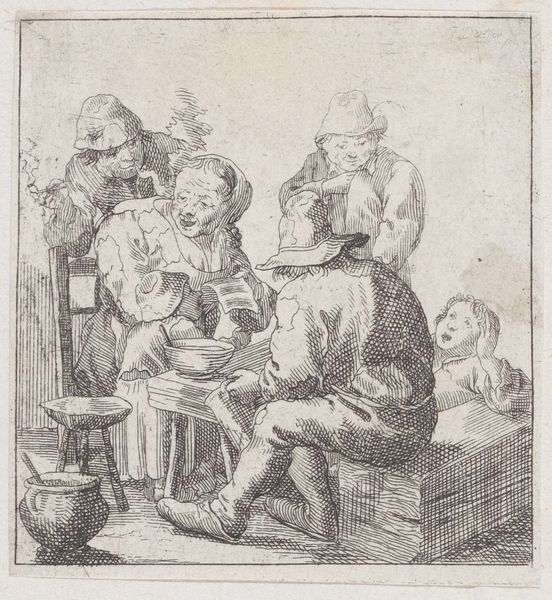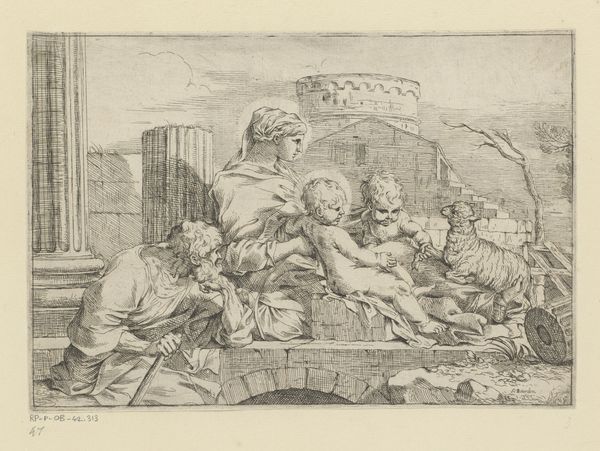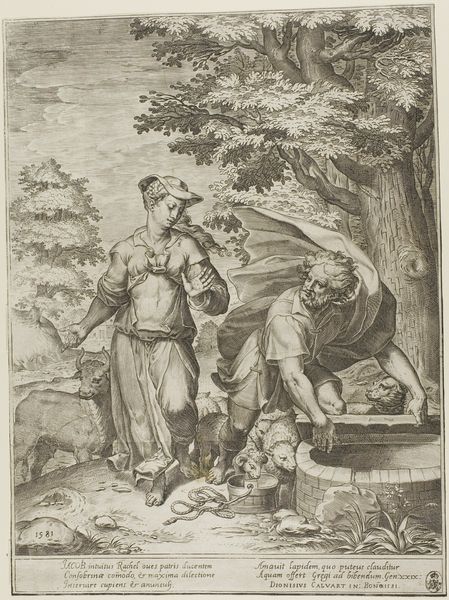
drawing, print, etching, ink
#
portrait
#
drawing
#
narrative-art
#
dutch-golden-age
# print
#
pen illustration
#
pen sketch
#
etching
#
ink
#
ink drawing experimentation
#
group-portraits
#
genre-painting
Dimensions: height 95 mm, width 135 mm
Copyright: Rijks Museum: Open Domain
Editor: This etching, "The Fortune Teller with a Client," by Jan van Ossenbeeck, from the late 17th century, seems like a snapshot of everyday life. I am fascinated by the detailed rendering achieved through simple etching lines. What can you tell me about this scene? Curator: It's fascinating how Ossenbeeck depicts the exchange. Notice the production of this print, using etching: it suggests wider circulation. And who is its audience? This scene highlights the market for fortune telling in the Dutch Golden Age. The material culture present—the clothes, the wine, the very act of trading information—speaks volumes about the social fabric of the time and people looking for answers. Editor: So you are saying that the material reality represented within the etching connects to the wider socio-economic conditions of the time? Curator: Precisely! Consider the labour involved in creating and consuming these kinds of printed images. Prints allowed the creation of narratives about societal desires. And think about how it shifts understandings about high art—isn't this simply a commercial exchange that became "art"? It invites us to see art not as isolated genius, but something much more embedded in mundane and material culture. Editor: That's an interesting shift of perspective. Focusing on the mundane, the making and distribution, helps decode broader beliefs from that era! Thanks, I will rethink my perception of etching after this. Curator: Indeed, and through considering what artwork is and who makes it shifts art history from elites to common laborers!
Comments
No comments
Be the first to comment and join the conversation on the ultimate creative platform.
